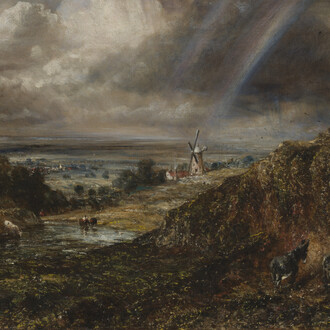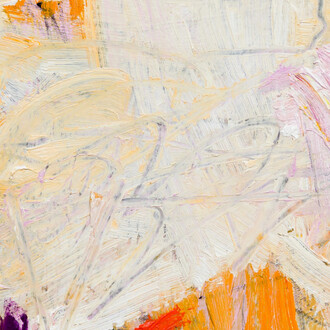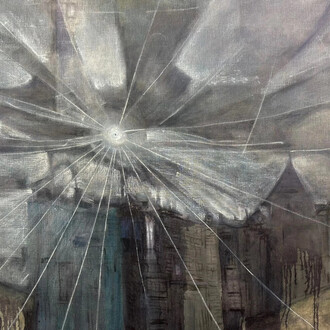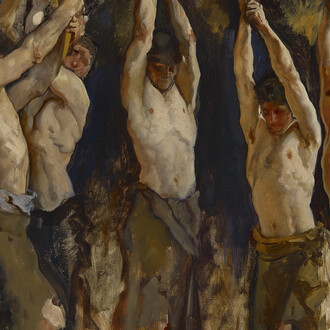‘We must not be caged in certain logic; I used to make images as real as possible, but now they have become dismembered, fragmented. Those paintings that were so perfect have exploded and shattered into brushstrokes; they require deeper reading skills to discover the subject, revealed slowly as in a game of Chinese boxes. The viewer is mesmerized by the decoding of signs, reminded of the chaos of the contemporary world.’
Giuseppe Linardi’s Decoded exhibition for Hay Hill Gallery is a not-to-be-missed visual experience. The bright canvases are a matrix of optical sensations as disconcerting as magic-eye pictures or interactive screens; reminiscent of bit-map zeros and ones, the broad dots and dashes merge to unveil their hidden subjects. The works could be seen as a kaleidoscopic rendering of the data we leave in our wake- an endless obsession with documenting our existence.
The artist’s clever manipulation of pigment acts like a zoetrope, with two dimensional tessellating planes that transform static images into a vibrant animation. They become metaphors for the intricate design of the universe; sprawling across the walls like digitally grown gardens, with shining green pixels blooming out leaves, stalks and branches. In the blink of an eye or the slowest shutter speed, everything is revealed to be interconnected; our atoms will eventually dissipate and reform in new prismic swarms.
Eternally curious about the stuff we are made of, we look for patterns to orientate ourselves, deciphering the cryptic signs. We have analysed genomics, heuristics and algorithms- depleting our natural resources in the hope that by unraveling these sums we may find a cure for cancers, colds and global warming- even venturing upon the more dangerous territory of cloning. Linardi’s exhibition raises an interesting ethical debate on whether cracking these codes will lead us to be better stewards of our planet, or continue to destroy it.
Giuseppe Linardi was born in Buenos Aires in 1971 and graduated from the Academy of Fine Art in Florence. Now based in Follonica, his artistic career spans over two contrasting phases- at first devoted to hyperrealism, Linardi’s technique has now developed into a more spontaneous style. The new paintings evolve through elaborate methods of paint dripping, enriched with unusual colours and resins. Linardi is a versatile artist, also known for his installation and sculptural work.



















